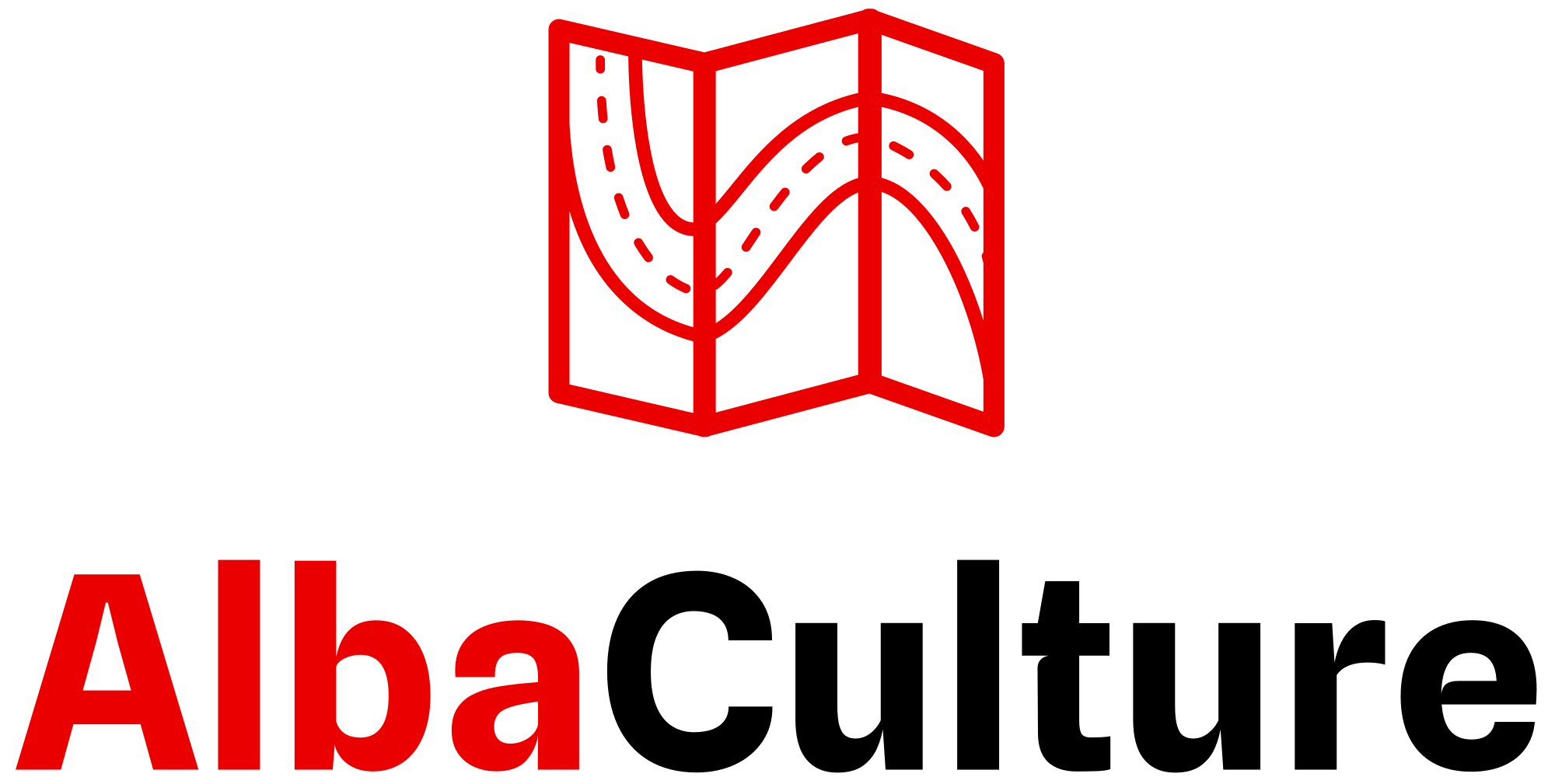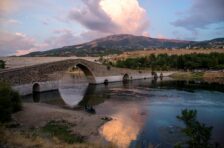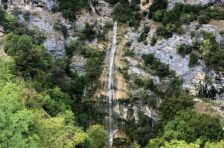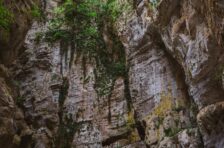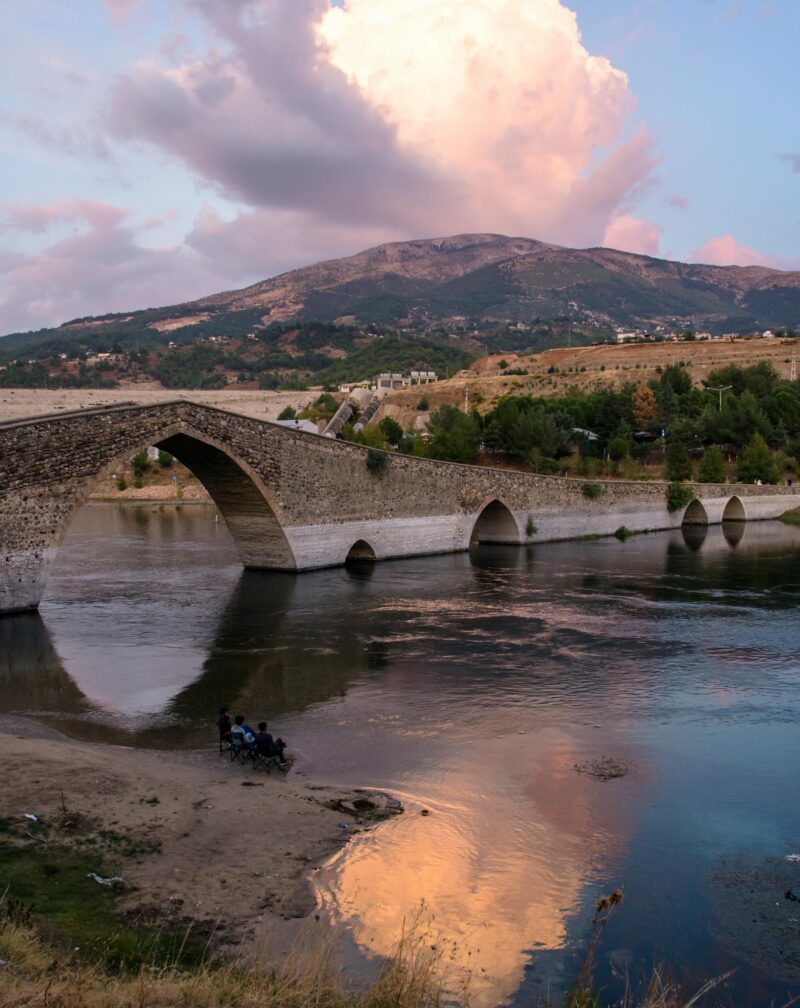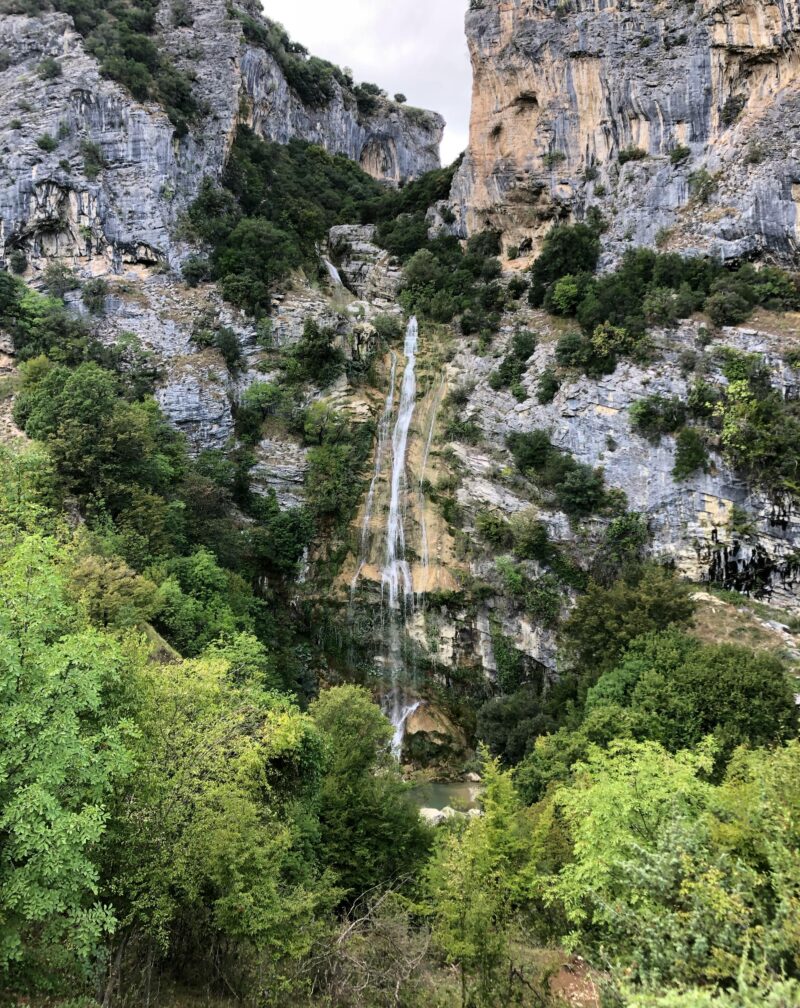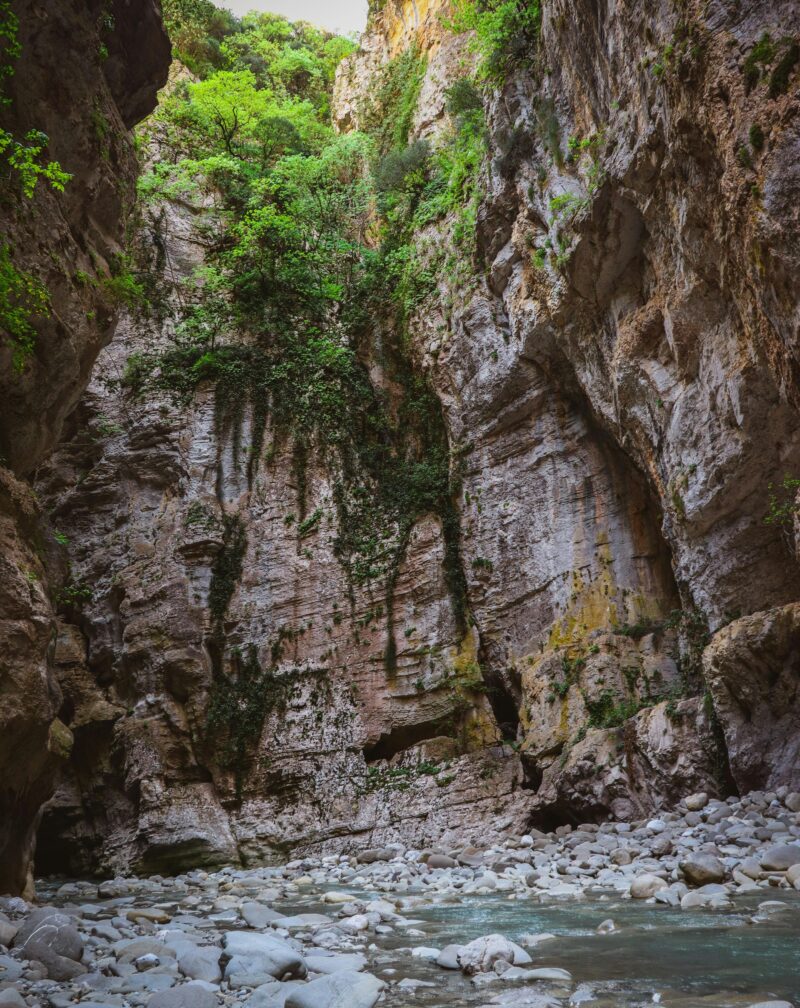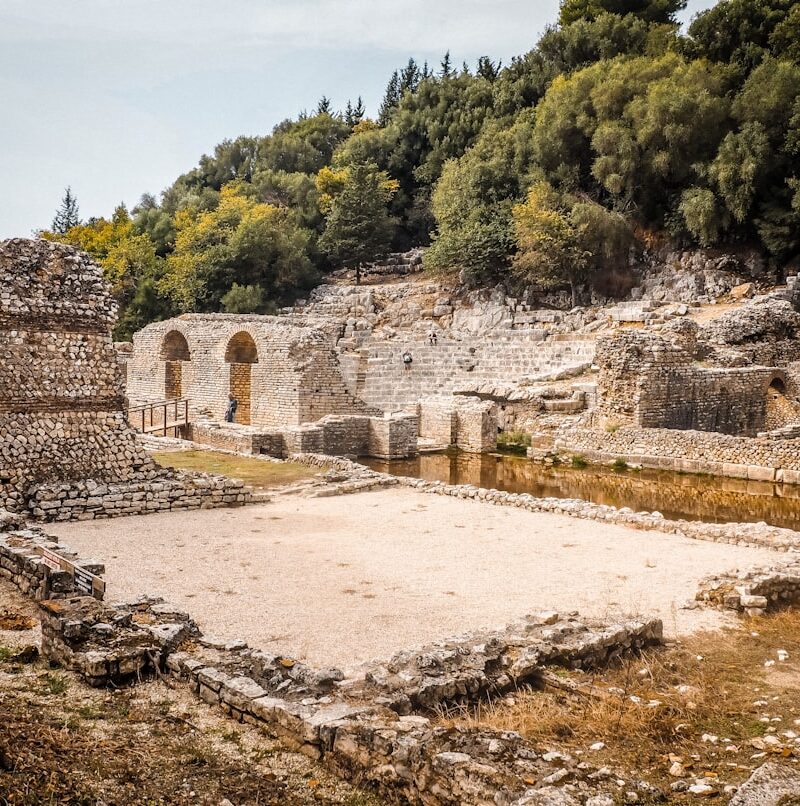The Stone City
Gjirokastër grips the mountainside like it’s part of the mountain itself. Stone houses cascade down steep slopes; gray slate roofs layered like scales. From a distance, it’s striking. Up close, walking those steep streets, you understand why it’s called the Stone City—stone underfoot, stone houses around you, stone walls, stone everywhere.
UNESCO recognition came in 2005. The town preserves Ottoman-era architecture better than almost anywhere in the Balkans. But this isn’t sanitized preservation—people live here, shops sell everyday items alongside souvenirs, life continues within the historic fabric.
Gjirokastër Castle
The castle dominates from above, as fortresses should. It’s one of Albania’s largest, with origins reaching back 2,500 years though most visible structures date from 19th century Ottoman rebuilding.
Approaching from town means climbing steep streets. Alternatively, vehicles can reach the upper entrance. Either way, arriving feels like reaching something significant.
Inside the walls, the complex sprawls. Multiple levels, rooms, corridors, towers. You can easily spend 2-3 hours exploring thoroughly.
The clock tower stands prominently, rebuilt after World War II damage. Views from upper levels are spectacular—the entire valley, Gjirokastër spread below, mountains beyond.
The Arms Museum occupies part of the castle, displaying weapons from various periods. It’s more extensive than you’d expect—swords, rifles, artillery pieces, uniforms. For people interested in military history, it’s worthwhile. Others might skim quickly.
The captured American spy plane from 1957 sits in the courtyard—an Air Force plane forced down during Cold War reconnaissance. It’s surreal artifact, American military equipment in Albanian castle, relic of confrontations that shaped Hoxha’s paranoia.
Tunnel system beneath castle dates to Cold War—bunker complex built for defense. You can walk through sections, seeing rooms designed for surviving attacks. It’s concrete and dark, testament to regime’s fears.
The castle hosts the National Folklore Festival every five years (next in 2025). During festival, the space transforms—stages, performers, crowds. Between festivals, it’s quieter, allowing contemplation of stone and history.
Entry costs around 200 lek. The castle is open daily, usually 9 AM to 6 PM (shorter winter hours).
Old Bazaar (Pazari i Vjetër)
The bazaar sits below the castle, connected by steep lanes. Ottoman-era shops line cobblestone streets, selling copper work, textiles, woodcarvings, traditional items.
Some shops maintain genuine crafts—coppersmiths hammering designs, wood carvers working intricate patterns. Others sell tourist souvenirs of variable quality. Distinguishing requires attention, but vendors are usually honest about what’s handmade versus imported.
Prices are negotiable at craft stalls. Start at 60-70% of the asking price, settle somewhere mutually agreeable. It’s expected, not offensive.
The bazaar also includes everyday shops—groceries, hardware, clothing for locals. This mixture of tourist commerce and daily life keeps it feeling authentic rather than staged.
Small cafes serve coffee and raki. Sitting in the bazaar, watching activity, drinking bitter coffee—that’s as much Gjirokastër as any monument.
Traditional Ottoman Houses
Gjirokastër’s defining architectural feature is tower houses (kule)—fortified residences built for wealthy families during the Ottoman period. The architecture is distinctive: stone walls, small exterior windows for defense, elaborate interiors with carved ceilings and traditional decorations.
Skenduli House is the most famous, dating from 1700s. The family still owns it and family members give tours—personal history spanning centuries. You’ll see:
- Multiple floors with distinct functions
- Men’s and women’s quarters (selamlik and haremlik)
- Twelve fireplaces for heating different rooms
- Carved wooden ceilings with intricate patterns
- Cold water room (early refrigeration)
- Secret passages and defensive features
- Original furniture and household items
- Rooftop with panoramic views
The tour is intimate—actual family member showing family home, telling family stories. It’s not just architecture but lineage, survival, adaptation across empires and regimes.
The cost is around 400-500 lek. Tours happen regularly but confirm timing at the house.
Zekate House (1811) is another Ottoman mansion, larger and more ornate than Skenduli. The architecture shows evolution—later construction, different wealth level, additional refinements.
Comparing the two houses reveals how Ottoman domestic architecture varied by period, family status, and builder’s ambition.
Entry around 300 lek, open regular hours.
Ethnographic Museum
Housed in the house where Enver Hoxha was born (1908), this museum’s identity is complicated. It displays traditional Gjirokastër life—costumes, tools, household items, crafts—which is interesting.
But it’s Hoxha’s birth house, and that connection creates tension. Some Albanians avoid it on principle, not wanting to honor the dictator even indirectly. Others view it as a historical site beyond politics.
The museum downplays Hoxha connection, focusing on ethnography. One room mentions his birth; the rest shows traditional culture.
Worth visiting for ethnographic content but understand the complex symbolism. Entry is a few hundred lek.
Cold War Tunnel
Separate from castle tunnel, this underground complex was built beneath city as nuclear shelter for party leadership. It has 59 rooms designed to house government during nuclear war.
The paranoia manifested in this construction is staggering resources poured into shelter for privileged few while country remained desperately poor.
Tours show meeting rooms, living quarters, communications facilities, hospital areas. Everything needed for surviving underground after nuclear attack.
It’s claustrophobic and unsettling. Good. It should be. Understanding what regime feared and prioritized requires confronting this physical evidence.
Entry around 500 lek, tours happen regularly.
Memi Pasha Mosque and Ali Pasha Mosque
Gjirokastër has several Ottoman-era mosques. Memi Pasha Mosque (1612) is oldest, showing early Ottoman style. It’s not always open, but exterior architecture demonstrates classical design.
Ali Pasha Mosque within castle grounds is accessible during castle visit.
These mosques aren’t heavily touristed but are important to local Muslim community and architectural heritage.
Ali Pasha Bridge
Medieval stone bridge over Drinos River, built by Ali Pasha of Ioannina (the same who built Porto Palermo castle). It’s a few kilometers from the town center—you’ll need transport unless you enjoy long walks.
The bridge is photogenic and historically significant but not elaborate. Visit if you have time and interest in Ottoman civil engineering. Skip if your schedule is tight.
Labova e Kryqit
About an hour from Gjirokastër, this tiny mountain village houses Church of St. Mary, one of Albania’s oldest Christian structures (6th century). Greek inscriptions and Byzantine architectural elements survive.
Reaching it requires winding mountain roads. The church isn’t always open finding the keyholder requires asking villagers. This sounds difficult but usually works—someone knows where the key is.
It’s pilgrimage for architecture enthusiasts and worth effort for anyone interested in early Christian history in Albania. For casual visitors, the journey might exceed the payoff.
Blue Eye (Syri i Kaltër)
About 40 minutes from Gjirokastër, this natural spring creates a stunning blue pool surrounded by forest. The color comes from depth and light refraction—it’s genuinely striking.
Walking paths circle the spring. Restaurants provide food and drinks. Some people swim, though the water is cold year-round.
It’s a pleasant half-day trip, combining natural beauty with light hiking. Not essential but enjoyable, particularly in summer heat.
Raki Distilleries
Traditional raki production continues in the Gjirokastër region. Some distilleries welcome visitors during production season (autumn, when fruit is harvested and fermented).
You’ll see copper stills, fermentation process, aging in barrels. Tasting is expected—various raki types (grape, plum, mulberry) with different characteristics.
These visits aren’t always formalized—asking locally or through hotels often yields private arrangements. More authentic than organized tours but requiring flexibility.
Food and Restaurants
Gjirokastër has distinct culinary traditions. Specialties include:
Shapkat – tripe soup, traditional breakfast or hangover cure
Kukurec – lamb intestine wrap, grilled
Pasha qofte – seasoned meatballs, Gjirokastër style
Oshaf – dried fruit compote
Traditional restaurants in stone houses offer atmospheric dining. Prices are moderate—1,000-1,500 lek for main courses typically.
Practical Information
Getting There: Buses from Tirana take 4-5 hours (1,000-1,200 lek). From Saranda about 1.5 hours (400 lek). Roads are winding—consider motion sickness if prone.
Getting Around: Gjirokastër is steep. Walking between main attractions involves climbing. Taxis can take you to upper areas, then you walk downhill. Comfortable, sturdy shoes are essential.
Where to Stay: Hotels and guesthouses exist at various price points. Staying in a traditional stone house adds to the experience. Summer booking ahead is wise.
How Long: One night (one full day) covers main sights. Two nights allows relaxed pace, day trip to Labova or Blue Eye, evening strolls.
When to Visit: April-October ideal. Summer can be hot at midday. Winter brings cold and occasional snow. The castle and houses are open year-round.
Challenges: The steep terrain is a real challenge for anyone with mobility issues. Streets are cobblestone, uneven, always sloped. This limits accessibility but is inherent to the city’s character.
The Gjirokastër Character
Gjirokastër feels different from Berat despite both being UNESCO Ottoman towns. Where Berat is white and light, Gjirokastër is gray and weighty. Berat spreads across the hillside, Gjirokastër clings to the mountain.
The atmosphere is more serious, somehow. The stone, the fortress, the history—it all feels heavier. This isn’t negative, just a different tone.
Gjirokastër was Ismail Kadare’s birthplace—Albania’s most famous writer. His novels often reference the town, its stone houses, its winters, its particular character. Reading Kadare before or during a visit adds layers of understanding.
It was also Hoxha’s birthplace, which creates a complex legacy. The town suffered during communism—as did all Albania—but Hoxha’s connection gave it certain protections and resources.
Today’s Gjirokastër navigates these competing legacies while maintaining daily life and welcoming tourists. The balance seems successful—it’s clearly a historic and cultural treasure, yet functions as living city rather than museum.
The steepness cannot be overstated. Every walk involves climbing or descending. You’ll feel it in your legs. But reaching viewpoints, looking over slate roofs to mountains beyond, you understand why people built here despite difficulty. The defensive position, the water sources, the dramatic beauty—all made this mountain perch worth the effort.



